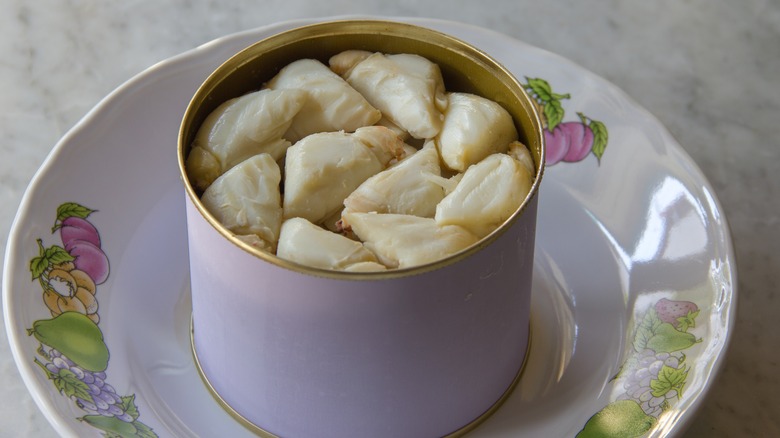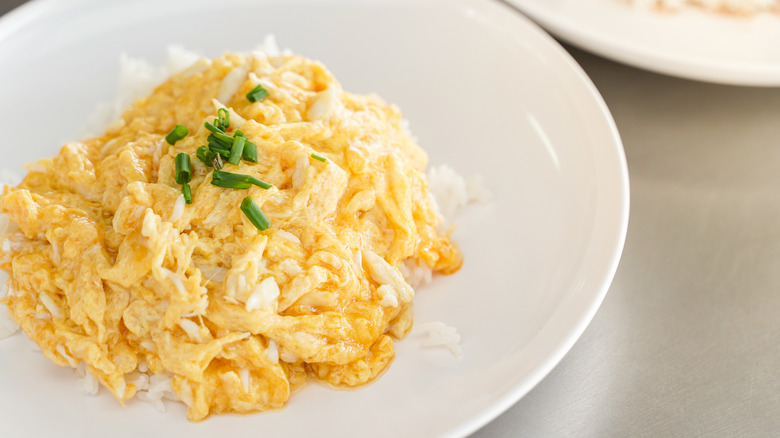The Mistake You're Making With Canned Crab
Crab is one of those culinary items that can feel extra indulgent. This shellfish can be described as flaky and buttery, sweet, versatile, and satisfying. And while it may feel like a luxury, the truth is you don't need to break the bank if you want to enjoy a delicious crab creation, whether it's in crab cakes, crab Louis, or an avocado crab salad. In fact, there are a lot of great reasons to skip the pricey seafood counter at your fishmonger and instead reach for canned crab.
This pre-packed meat is super convenient, readily available all year around, often at a far more approachable price point than its fresh counterpart. There is one mistake that might sink your shellfish ship, however. Although it's optional and, technically, you can pop your meat straight from the can and serve it, giving your canned crab a quick rinse will help ensure that salt and preservatives don't muddy your meal's waters.
What you're rinsing off canned crab, and how to do it
Like most commercial products, you'll find a range of qualities in this category, and there are some tips regarding what to look out for when buying the best canned crab. When scanning the ingredients, you're looking for purity when possible, with the fewest additives. That said, you're most likely going to find sodium tripolyphosphate or similar, which is a preservative used for everything from a firm texture to color retention. It's not harmful to eat in small quantities, but it can leave some less pleasant lingering flavors (bitterness or acidity among them) that aren't exactly complementary to your crab dish.
Since additives like this are quite prevalent, it may be difficult to avoid picking up a can that's totally free of them. This is where rinsing comes into play. By washing off that briny liquid after draining your crab, you'll more easily achieve a flavor closer to the fresh stuff. Preparing rinsed canned crab meat is a simple, three-step process: Open your can and drain off the liquid, then take a moment to look through your meat for any stray bits of shell. From there, give your crab a rinse in cold water and you're good to go for your favorite shellfish creations.
Using your rinsed and ready canned crab
Beyond the ingredient list, your can will provide other useful information, particularly the type of crab you'll find inside. Jumbo or colossal lump crabmeat will be on the highest end of the spectrum, with claw meat toward the bottom. The former is the most expensive and the latter the least, and the investment level may help inform how you use your crab.
If you're planning to serve a simpler preparation like a Connecticut-style crab roll, in which the only real "dressing" is warm butter and aromatics, you'll probably want to look for a higher-quality variety like jumbo lump crab. Claw meat, on the other hand, is better-suited to a dish like crab cakes, in which you'll mix your shellfish with seasonings and breadcrumbs and serve them with a sauce.
Being that this seafood delight seems almost endlessly useful, from savory breakfast omelets to impressive dinner dishes, it's good to know that you can always get your hands on a can. And by rinsing the crab before use, you can always have access to the freshest-tasting meat, no matter your inspiration.


